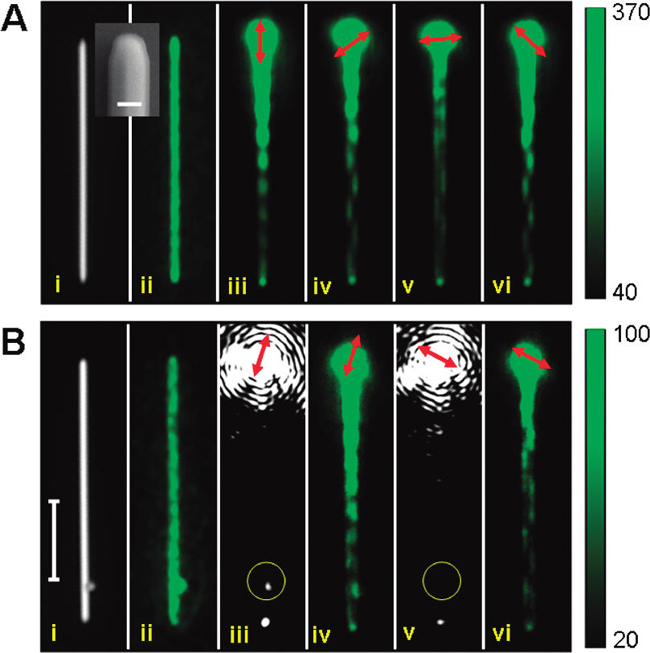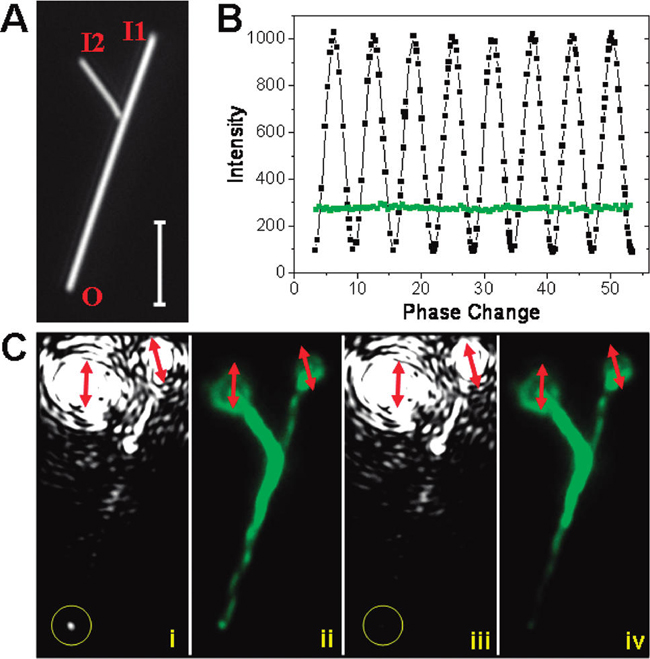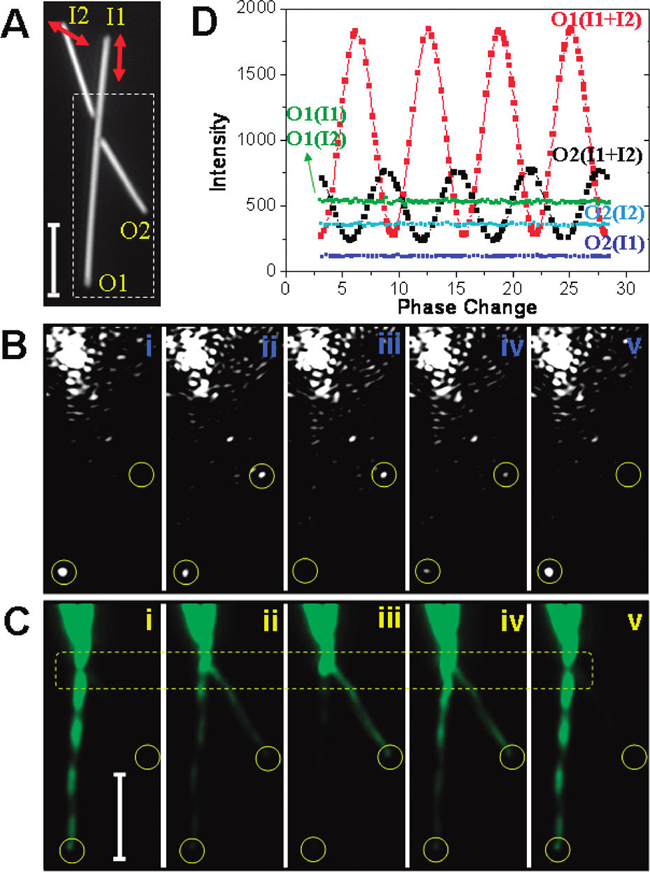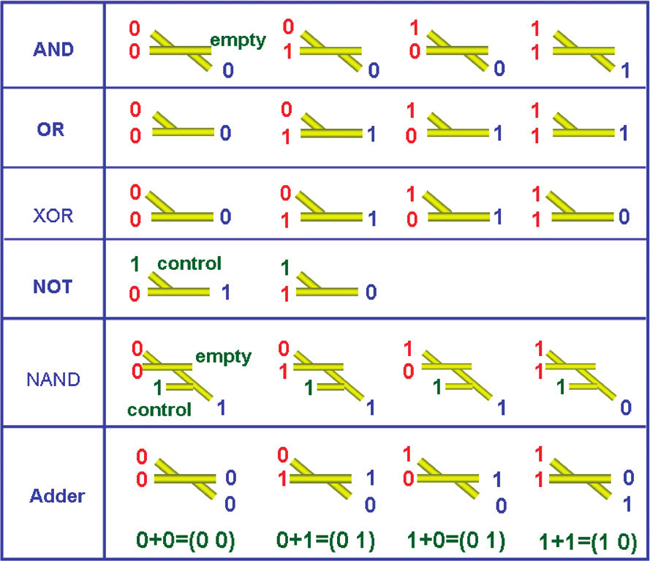All-optical logic gates and half adder at nanometer scale based on surface plasmons
Nano-plasmonic structures have shown many interesting properties and attracted great attention recently. These properties make the manipulation of light at nanoscale becoming possible. Due to the strong field confinement effect in metallic nanowires (NWs), these 1-D structures can overcome the diffraction limitation imposed on conventional optical components and support light propagation in sub-wavelength volume.
In last couple of years, Prof. Hongxing Xu and his research team in the Institute of Physics, Chinese Academy of Sciences, have made a series of important progresses in the understanding of various properties of surface plasmon (SP) propagation supported by Ag NWs, such as directional dependence of SP emission, correlation between incidence and emission light polarization, and the influence of substrate to the propagation of SP and demonstrated their potential applications in many areas of nanotechnology, including remote excitation of Raman scattering and fluorescence of quantum dots as well as routing effect in branched NW networks. Most recently, Dr. Hong Wei et al. in Prof Xu’s group have realized various logic functions using Ag NW networks.
The Ag NW network is usually composed of a primary NW and a secondary, adjacent NW. By varying the polarization and relative phase of two input lights, it is possible to turn on or off emission paths, resulting in combinations of optical signals that execute specific interferometric Boolean logic operations. An imaging strategy based on quantum-dot luminescence is implemented, which allows us to visualize the near-field distribution of SPs propagating on silver NWs in detail. The logic gates AND, OR, and NOT, are demonstrated and are sufficient to realize all binary logic functions. We also illustrate that this concept can be further generalized and expanded to more complex structures.
These results are published in recent Nano Lett. 11, 471 (2011). Our findings shed new light onto both fundamental understanding of propagating plasmons in complex networks and may advance the development of integrated plasmonic devices for new generation information technologies. In addition, Prof Xu cooperated with Prof Mikael Kall’s group in Charlmers University of Technology in Sweden and found unidirectional broadband light emission from silver nanowires supported on a dielectric interface. The results are published in the same volume Nano Lett. 11, 706 (2011).
The work has been supported by Chinese Academy of Sciences, the National Natural Science Foundation of China, and the Chinese Ministry of Science and Technology.
 |
| Figure 1. QD emission images of plasmons launched by 632.8 nm laser excitation at one end of a Ag nanowire. Changing the polarization angle at the input modifies the field distribution in the nanowire (A) and controls the emission from an adjacent Ag nanoparticle at the opposite end of the wire (B). |
 |
| Figure 2. Interference of plasmons in Ag NWs. This structure can serve as a logic gate of OR, NOT, or XOR. |
 |
| Figure 3. Modulation and routing of light in a two input-two output nanowire network. This structure can serve as AND gate and half adder. |
 |
| Figure 4. Examples of all-optical logic operations based on NW networks. |





